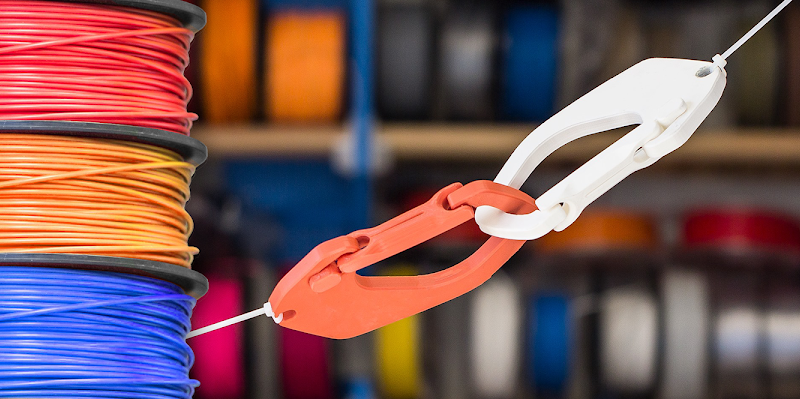Everything You Need to Know About 3D Printing Materials
Technological advancements in 3D printing have opened up a whole new world of possibilities for manufacturing and design. With the ability to create complex, customisable objects from digital designs, this production method has revolutionised traditional manufacturing methods and provided endless opportunities for innovation.
While 3D printing is useful in an array of industries – including aerospace, healthcare, and automotive – the materials used in this process play a crucial role in determining the strength, durability, and overall quality of the final product. Even if you’re only using it for personal projects or hobbies, knowing which materials to turn to for the ultimate final result is essential.
What Materials Are Used in 3D Printing?
What started as a process limited to plastic materials has now evolved to include a wide range of materials, each with its unique properties and uses. Some have a greater aesthetic appeal, while others are known for their durability and strength, especially when used to create functional parts or prototypes.
Nylon Filament
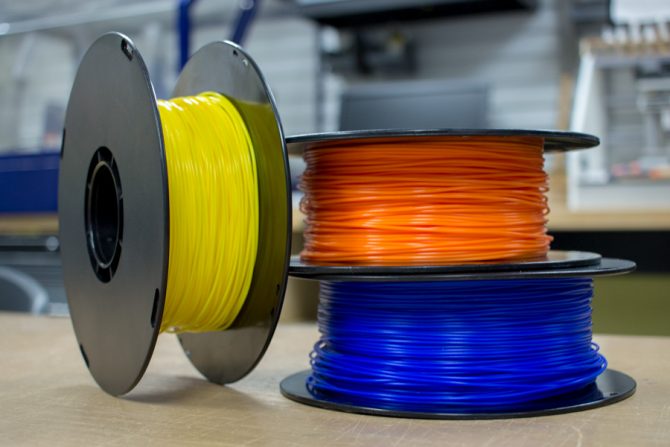
Also known as polyamide (PA), semi-flexible and impact-resistant nylon filaments are based on a semicrystalline structure, which is essentially a repeating pattern of molecules. As a highly technical and versatile material, nylon is used for producing objects that can withstand high impact or pressure, such as gears and bearings, prototypes for functional parts, and even machine parts.
The reason why nylon filaments are incredibly tough and resilient is attributed to their synthetically produced chemical structure. They’re derived through a process known as condensation polymerisation, where two different monomers or raw materials are combined to create a larger molecule. As a result, nylon exhibits an incredible strength-to-weight ratio and is also resistant to abrasion, which ultimately allows it to perform well in a wide range of applications.
Once the base material is combined and heated, you can reinforce it with carbon, glass, or even kevlar fibres to create a composite filament that further strengthens it. With a standard thermal resistance of up to 120°C, nylon filaments are relatively easy to print with and have a low shrinkage factor compared to other materials.
These materials can be further modified by adding additives like colourants, flame retardants, and even antimicrobial agents during the manufacturing process. This allows for the creation of customised filaments with specific properties suited for different applications. For example, coloured or transparent options can be used for aesthetic purposes, while flame-retardant models are ideal for creating functional parts that require fire resistance.
Keep in mind that nylon easily absorbs moisture from the atmosphere, which can affect its properties and cause inconsistent printing results. To prevent expanding bubbles of steam from forming within the material during printing, you need to store the material in an air-tight container with desiccants.
Finally, the material’s highly hygroscopic nature requires a heated build plate to prevent warping and cracking during printing. This is due to the high shrinkage rate of nylon as it cools down, causing the material to pull away from the build plate and potentially ruin the print. Therefore, when using nylon filaments, it’s necessary to have a capable 3D printer with a heated bed and proper temperature control to achieve high-quality prints.
ABS Filament
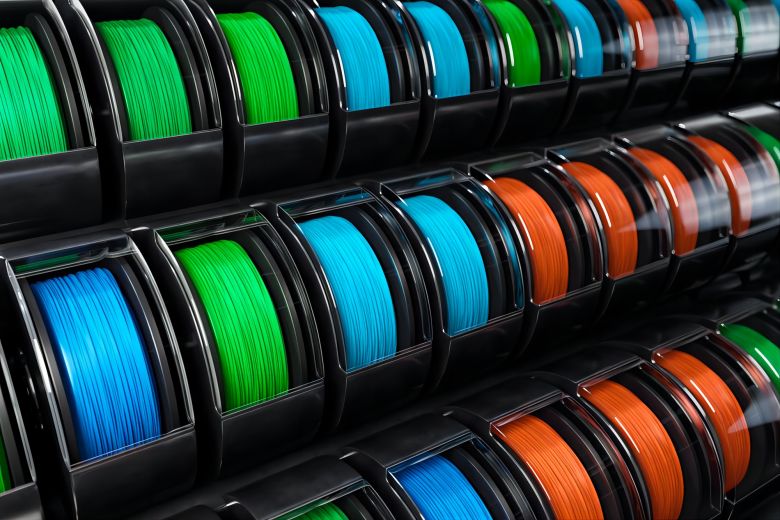
Next up is a rock-solid material that’s been a staple in the 3D printing world for decades – ABS (Acrylonitrile Butadiene Styrene). This petroleum-based thermoplastic is known for its durability, strength, and flexibility, making it suitable for creating functional parts. It’s also widely available and relatively inexpensive compared to other materials.
ABS options have a high melting point and low viscosity, making them easy to extrude and suitable for printing intricate designs. As such, this material is often used in applications where strength and detail are crucial, such as tool handles, automotive parts, and toys. Additionally, ABS is also easily post-processed through sanding, drilling, painting, and gluing.
PLA Filament
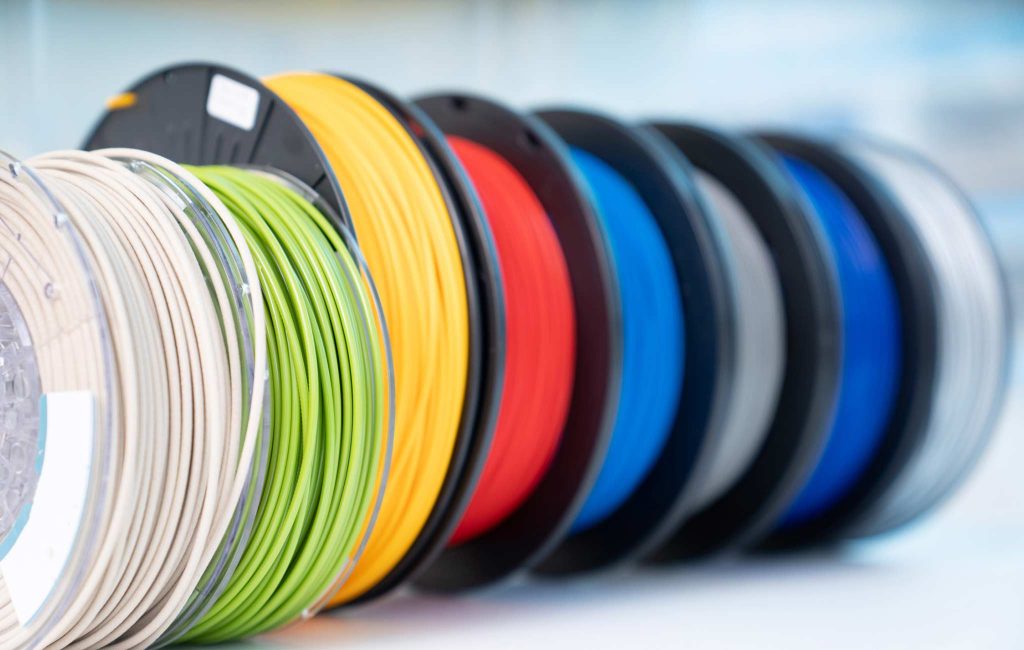
As an all-around 3D printing material, PLA (Polylactic Acid) has gained immense popularity in recent years due to its eco-friendliness and ease of use. This biodegradable thermoplastic is derived from renewable resources such as corn starch or sugar cane, making it an environmentally friendly alternative to petroleum-based plastics.
Moreover, PLA models have a lower melting point than ABS, which ultimately means it’s easier to print at lower temperatures. It also cools and solidifies faster, making it less prone to warping and cracking during printing. PLA is ideal for creating prototypes, decorative items, and low-stress applications such as phone cases, toys, and household objects.
PETG Filament
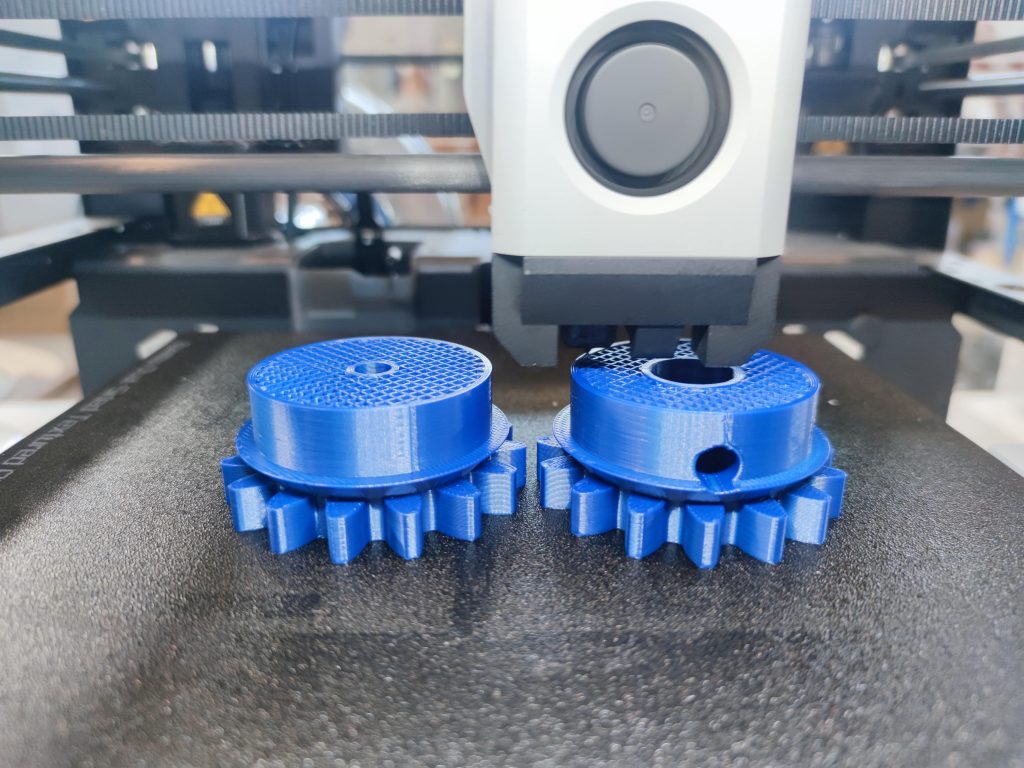
As a food-safe and recyclable material, PETG (Polyethylene Terephthalate Glycol-modified) is a common everyday plastic found in water bottles and food containers. Its popularity has grown in the 3D printing community due to its strength, flexibility, and transparency.
Thanks to its clear, glass-like appearance, PETG is often used for creating transparent or translucent prints, such as light diffusers, display boxes, and medical models. Its high chemical resistance also makes it suitable for functional parts that come in contact with food or chemicals. Additionally, PETG has a low melting point and minimal shrinkage during printing, which means it’s relatively easy to work with.
TPU Filament
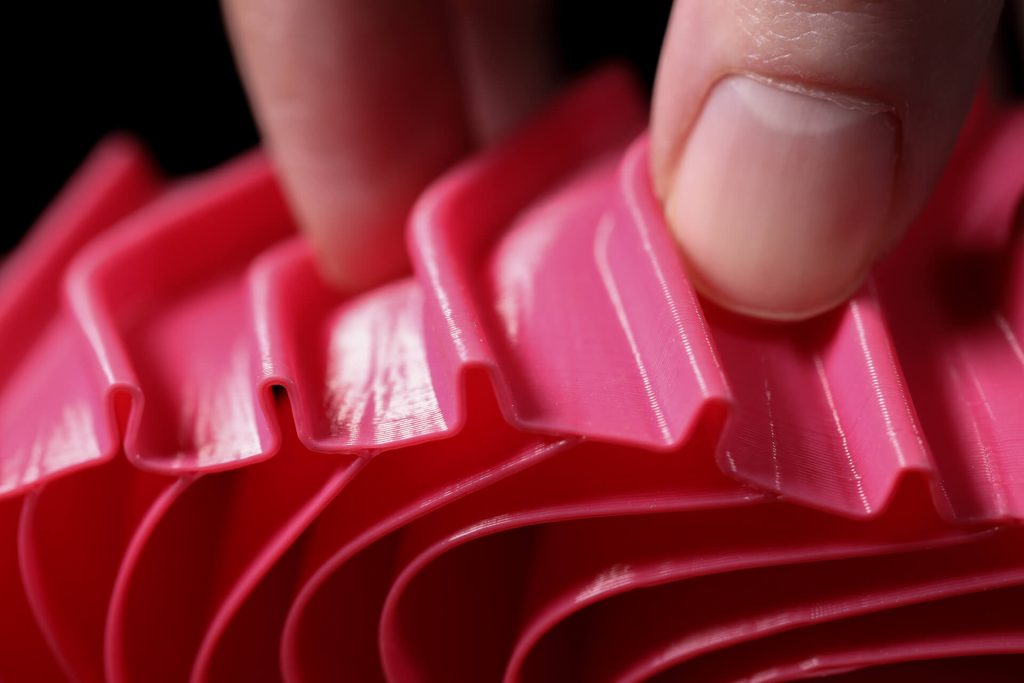
Finally, TPU (Thermoplastic Polyurethane) filaments are known for their flexibility, durability, and elasticity. This material has a rubber-like texture and can be stretched up to 450% without tearing or breaking, so it delivers impressive impact and abrasion resistance.
TPU is often used for creating phone cases, shoe soles, watch straps, and other flexible 3D prints. While it may not be the easiest material to print with due to its tendency to clog nozzles, it delivers high-quality results with a smooth surface finish and excellent layer adhesion.

